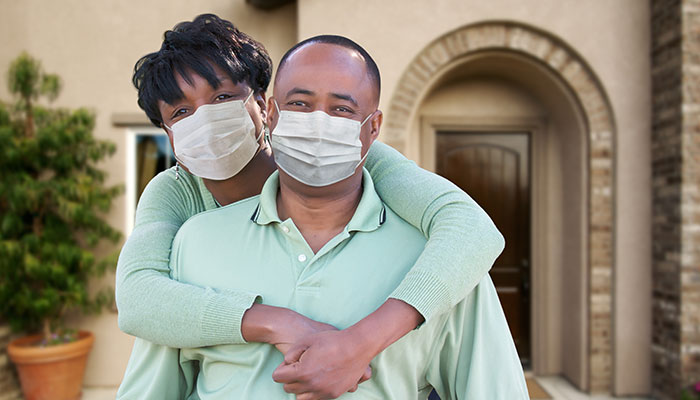Study finds people with sickle cell disease who developed coronavirus disease have high rates of hospitalization, intensive care unit admission, and death

Sickle cell disease (SCD) is an inherited blood cell disorder estimated to affect 100,000 people in the United States. It is most common among Black or African-American people, affecting an estimated 1 in 365 Black or African-American people in the United States. While healthy red blood cells are round and move through small blood vessels to carry oxygen to all parts of the body, in someone who has SCD, the red blood cells become hard and sticky and look like a C-shaped farm tool called a “sickle.” When these cells travel through small blood vessels, their sickle shape causes them to get stuck and clog the blood flow. The blockage can cause pain and other serious problems such as infection, acute chest syndrome, and stroke. SCD affects nearly every organ system in the body and causes a lower life expectancy.
Previous studies report higher influenza severity and hospitalization rates in people with SCD than without SCD. Less is known about the novel coronavirus disease (COVID-19) in people with SCD.
About This Study
The Medical College of Wisconsin SECURE-SCD Registry collects information on COVID-19 cases in people with SCD. Links to the registry have been widely distributed to SCD healthcare providers through medical professional and patient advocacy networks and CDC’s website. Providers are asked to report all confirmed COVID-19 cases among their patients with SCD.
Researchers from the Medical College of Wisconsin and CDC conducted an analysis of COVID-19 cases among people with SCD who are living in the United States and were reported to the SECURE-SCD Registry between March 20, 2020 and May 21, 2020.
Main Findings of This Study
From March 20–May 21, 2020, 178 people with SCD in the United States were reported to the SCD–COVID-19 case registry. Below are the main findings:
- Average age was 28.6 years.
- The majority had one or more SCD-related complications reported in the past. (For example, more than half had been hospitalized three or more times during the past 3 years for a pain crisis.)
- 122 (69%) patients were hospitalized during their COVID-19 illness, 19 (11%) were admitted to the intensive care unit (ICU) and 13 (7%) died.
- Given their young average age (28.6 years), these rates are striking. A previous report of the U.S. population at-large* indicates the rate of death among people with COVID-19 is less than 1% for both people 20–44 years of age and those 45–54 years of age.
While the findings of high hospitalization, ICU admission, and death rates among people with COVID-19 and SCD are not completely surprising, given the known health risks associated with SCD, they highlight the need for people with SCD to take extra precautions to prevent COVID-19.
* Bialek S, Boundy E, Bowen V, Chow N, Cohn A, Dowling N, et al.; CDC COVID-19 Response Team. Severe outcomes among patients with coronavirus disease 2019 (COVID-19)—United States, February 12–March 16, 2020. MMWR Morb Mortal Wkly Rep. 2020;69:343–6
What Can People with SCD Do?
It is especially important for people with medical conditions, such as SCD, that put them at increased risk of severe illness from COVID-19, and those who live with them, to protect themselves from getting COVID-19. For more information, see CDC’s recommended precautions for people with medical conditions.
Additionally, people with SCD may have difficulty accessing healthcare providers who are knowledgeable about SCD. These challenges need to be considered when planning COVID-19 prevention measures. For more information, see CDC’s recommended actions specific to those with hemoglobin disorders such as SCD.
Future Directions
Our understanding of COVID-19 among people with SCD continues to evolve, and additional investigations are needed to confirm the findings reported in this study.
Additionally, this study only included people with SCD, and did not assess whether people with sickle cell trait (SCT) are at high risk for severe COVID-19. People with SCT are those who inherit one sickle cell gene and one normal gene. Most people with SCT do not have any symptoms of SCD. However, some people with SCT have been shown to be more likely than those without SCT to experience heat stroke and muscle breakdown when doing intense exercise under unfavorable temperatures (very high or low) or conditions.
Reference
Coronavirus Disease Among Persons with Sickle Cell Disease, United States, March 20–May 21, 2020
Panepinto JA, Brandow A, Mucalo L, Yusuf F, Singh A, Taylor B, Payne AB, Peacock G, Schieve LA.
Emerging Infectious Diseases. 2020 Oct. https://doi.org/10.3201/eid2610.202792
